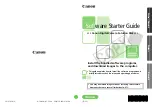
11
specified in the ERA Server. For more information, see the chapter about the configuration of ERAS – the Password
for Clients option). If a password is used, the communication between clients and the ERAS will be encrypted.
•
Kernel > Setup > License keys
Client computers require no license keys to be added or managed. License keys are used only for server products.
•
Kernel > Setup > ThreatSense.Net
This branch defines the behavior of the ThreatSense.Net Early Warning System, which allows submission of
suspicious files for analysis to ESET’s labs. When deploying ESET solutions to a large network, the
Submit
suspicious files
and
Enable submission of anonymous statistical information
options are particularly
important: If these are set to
Do not submit
or
No
, respectively, the ThreatSense.Net System is completely
disabled. To submit files automatically with no need for user interaction, select
Submit without asking
and
Yes
, respectively. If a proxy server is used with the Internet connection, specify the connection parameters under
Kernel > Setup > Proxy server
.
•
Kernel > Setup > Protect setup parameters
Allows the administrator to password protect the setup parameters. If a password is established, it will be
required in order to access the setup parameters on client workstations. However, the password will not affect
any changes to the configuration made from ERAC.
•
Kernel > Setup > Scheduler/Planner
This key contains the Scheduler/Planner options, which allow the administrator to schedule regular antivirus
scans, virus signature updates, etc.
NOTE:
By default, all ESET security solutions contain several predefined tasks. In most cases, it should not be necessary to edit
or add new ones.
•
Update
This branch of the Configuration Editor allows you to define how virus signature and program component
updates are handled on client workstations. In most cases it is necessary only to modify the predefined profile
My profile
and change the
Update server
,
User name
and
Password
settings. If
Update server
is set to
Choose
Automatically
, all updates will be downloaded from ESET’s update servers. In this case, please specify the
User
name
and
Password
parameters which were provided at the time of purchase. For information on setting client
workstations to receive updates from a local server (Mirror), please see section 3.3, “LAN Update Server - Mirror”.
NOTE:
On mobile devices, two profiles can be configured – one to provide updating from the Mirror server, and the other to
download updates directly from ESET’s servers. For more information, see section 8.2 “Combined update for notebooks and
mobile devices.”
3.3 LAN Update Server -Mirror
The Mirror feature allows a user to create a local update server. Client computers will not download virus signature
updates from ESET’s servers on the Internet, but will instead connect to a local Mirror server on your network. The
main advantages of this solution are to save Internet bandwidth and to minimize network traffic, since the mirror
server connects to the Internet for updates, rather than hundreds of client machines. The only potential drawback
is an outage of the Mirror server, which would prevent updates from being sent to client workstations (if it was the
only server providing updates).
Warning!
A Mirror server which performed a program component upgrade and has not been rebooted may cause
an outage. In this scenario, the server would be unable to download ANY updates or distribute them to client
workstations. DO NOT SET AUTOMATIC PROGRAM COMPONENT UPGRADES FOR ESET SERVER PRODUCTS! (see
section 3.3.1 for more information on program component upgrades)
The Mirror feature is available in two locations:
• ESET Remote Administrator (Mirror physically running within ERAS, manageable from ERAC)
• ESET Smart Security Business Edition or ESET NOD32 Antivirus Business Edition (provided that the Business
Edition has been activated by a license key)
It is left to the administrator to select the method for activating the Mirror feature.
In large networks it is possible to create multiple Mirror servers (e.g., for various company departments), and
establish one of them as central (at company headquarters) in cascade-style – similar to an ERAS configuration
with multiple clients.












































